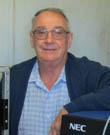|
|
 
|
|
Author
|
Topic: Getting sound out of film projectors.
|
Stephen Furley
Film God

Posts: 3059
From: Coulsdon, Croydon, England
Registered: May 2002
|
 posted 12-02-2002 02:09 PM
posted 12-02-2002 02:09 PM




A recent post in another thread about connecting 16mm projectors to amplifiers reminded me of something I have wondered about in the past. Many 16mm projectors provide a line output which can be taken into a normal theatre sound system, but on 35mm it has been the standard practice to take the signal direct from the photo cells and/or magnetic heads, with all the electronics being in the sound rack. Why is this? I would have thought it would be better to provide pre-amps, head/slit equalisation etc. in the projectors themselves, and then take standard 600 Ohm balanced line outputs to the rack. This would avoid taking the very low level signals from the heads through long cables, with the risk of picking up noise from equipment such as rectifiers and light dimmers, and there would be no problems of cells needing a different supply Voltage or magnetic heads being the wrong impedance etc. All this matching would be taken care of within the projector. The only reason I can think of is that when pre-amps consisted of several valves, transformers etc. there was simply not enough room to fit them within the projector sound heads. Is this the reason, and, if not, what is it?
| IP: Logged
|
|
|
|
|
|
|
|
|
|
|
|
|
|
|
|
|
|
|
|
|
|
All times are Central (GMT -6:00)
|
|
Powered by Infopop Corporation
UBB.classicTM
6.3.1.2
The Film-Tech Forums are designed for various members related to the cinema industry to express their opinions, viewpoints and testimonials on various products, services and events based upon speculation, personal knowledge and factual information through use, therefore all views represented here allow no liability upon the publishers of this web site and the owners of said views assume no liability for any ill will resulting from these postings. The posts made here are for educational as well as entertainment purposes and as such anyone viewing this portion of the website must accept these views as statements of the author of that opinion
and agrees to release the authors from any and all liability.
|

 Home
Home
 Products
Products
 Store
Store
 Forum
Forum
 Warehouse
Warehouse
 Contact Us
Contact Us




 Printer-friendly view of this topic
Printer-friendly view of this topic










![[Wink]](wink.gif) )
)





